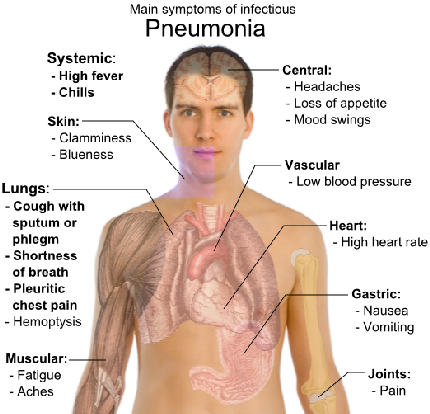Karbapenem resistant Klebsiella pneumonia associated with long-term-Care Foundation, West Virginia, 2009-2011
MMWR. 2011, 60:1418-1420
1 table omitted January 27, 2011, West Virginia County Health Department was notified of a cluster karbapenem resistant Klebsiella pneumonia
(CRKP) cases were found in a local hospital (hospital). CRKP infections often resistant to most antimicrobial agents >> << and have an increased risk of morbidity and mortality. West Virginia Bureau of Health (WVBPH) conducted field studies to identify all cases that characterize the risk factors
infection, and abstract data correspond to case-control study. Nineteen case patients and 38 control group patients
identified. Infection CRKP was due to revenues or to stop at a local children's long-term facility (LTCF
). Pulsed-field gel electrophoresis (PFGE) analysis showed that all five hospitals in clinical samples, and all 11 points
prevalence study LTCF isolates were closely related. This is the first outbreak CRKP defined in West Virginia. Recommendations LTCF included the following: (1) to initiate surveillance drug-resistant microorganisms, (2)
see and improve prevention and infection control activities within the enterprise, (3) educate residents and their families, doctors,
and employees of CRKP and (4) identify qualified personnel to coordinate the functions of infection control within the object. Although the LTCF has made significant improvements, began an investigation continues. Additional site visits were conducted
, and more colonized residents were found, the last clinical case was discovered in July. These data demonstrate the relationship
health and factors that potentially contribute to transmission. Measures targeted at all levels of care necessary to prevent further transmission CRKP. In cooperation with local health department and hospital, WVBPH conducted a preliminary inquiry into the field in February
7-9, to identify all cases and describe risk factors of infection. The case was defined as the first detection in CRKP
hospitalized patient unit in April 2009-February 2011. Descriptive analysis was conducted to assess patients'
demographics, admitting, medical institution, reason for admission, admitting source for the patient and the time between intake and
culture collection of the sample. The second field study was conducted in February 21-24 to total abstraction of data for compliance with case-control study. Management of patients were found in patients admitted to a hospital unit with clinical culture karbapenem susceptible to
K. pneumonia in April 2009-February 2011. Where possible, each case-patient was matched for 10 years with two managers >> << patients and give sample collection within 14 days. Data strattera no prescritpion on demographics of patients, the initial hospitalization, is
devices and procedures, the history of multidrug-resistant organisms (MDROs), history of stay in hospitals and LTCFs and related >> << diseases (as reported Charlson index komorbidnosti evaluation *) were collected in both cases, patients and controls. Visit in hospital and LTCF were conducted during the preliminary investigation area. These surveillance and practice
and infection control policies and practices, as objects were considered. Studies point to determine the prevalence of base >> << prevalence CRKP was conducted in accordance with CDC protocol recommended >> << in oncology and medical / surgical units in hospitals and LTCF facilitywide on data from field studies of A. and corresponds to a case control study were analyzed using statistical software. Risk factors for
CRKP evaluated by performing exact conditional logistic regression to calculate the precise relationship chances (Osh) estimates and 95%
confidence intervals for dichotomous variables. Because of abnormal distribution of continuous variables, median two trial tests
used to estimate statistically significant differences between case-patients and patients of the control group. A total of 19 cases were found for samples of the collection dates of 4 April 2009-21 February 2011. Among the cases
16 patients were taken from LTCFs, 14 of which were from LTCF (see table). Cultures were obtained from 10 of 14
LTCF case patients ≤ 2 days after admission to hospital, indicating they probably came to the hospital with an infection. A total of 38 patients of the control group were found. Several characteristics of case-patients and patients of the control group were compared
(see table). Estimates of age, race, and Charlson comorbidities were similar for both groups, but case-patients (58%) more often than
control group patients (16%) were male. Case patients had more length of stay in hospital (average 11. 4 days) and higher
number of previous hospitalizations (average 2. 5). A small number of case patients, risk factors for infection were evaluated CRKP exact conditional logistic regression >>. The risk of infection << CRKP was most closely associated with prior stay in the LTCF (OR = 46. 6) and admission
from LTCF (OR = 35. 1). Case patients were significantly less likely than patients of the control group during outpatient diagnostic >> << and spent time at home during the previous year. Hospital surveillance and infection control methods were considered adequate, while the score of observation

and methods to combat infection in LTCF shortcomings. Infection preventionist position in LTCF was vacant >> << 9 months. Electronic monitoring was available, but the object is to record the results of laboratory tests or MDRO
status of residents in this system. LTCF used medical laboratory is not informed karbapenemov resistance, but not record >> << existed infection among CRKP LTCF residents. Staff hand hygiene stations were not conveniently located, and supplies
(such as gloves, gowns and containers for waste), missing under contact precautions. Point prevalence survey
done, none of the 29 hospital patients samples were positive CRKP, while 11 (9%) of 118 residents of samples, including
eight people have not CRKP colonization were positive of LTCF A. Five clinical isolates of
Hospital and 11 isolates from the observation point prevalence study of LTCF aimed CDC for confirmation and PFGE
analysis. All 16 isolates were confirmed as carbapenemase (KPC) production
K. pneumonia and 88% of similarity in their PFGE patterns. .






